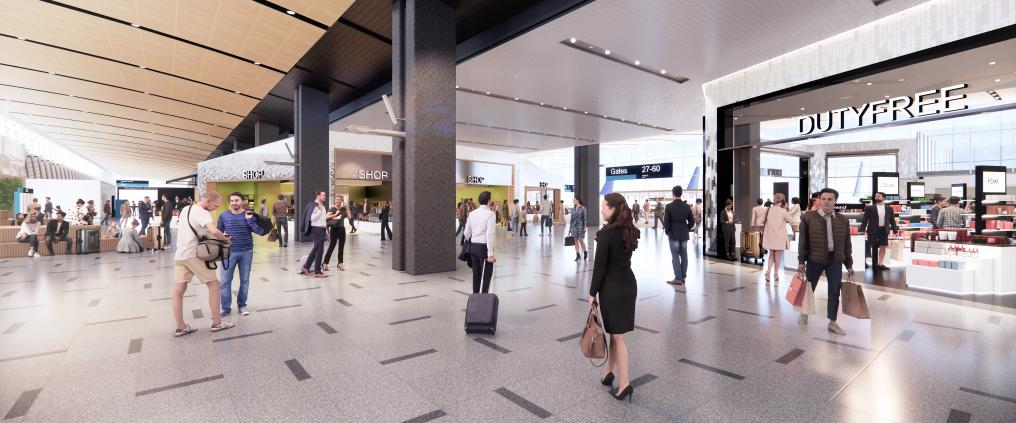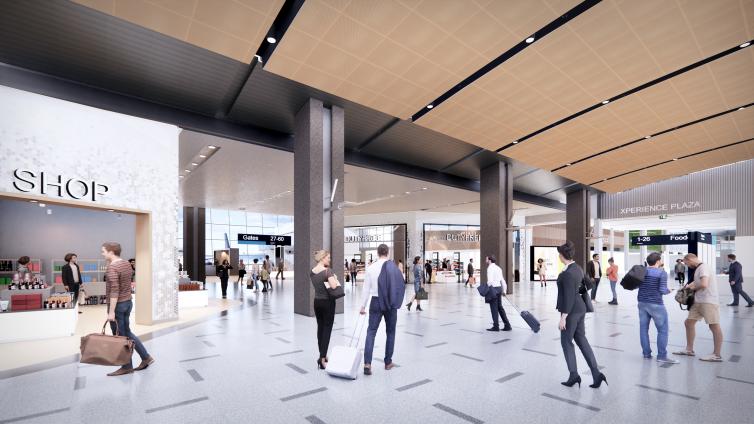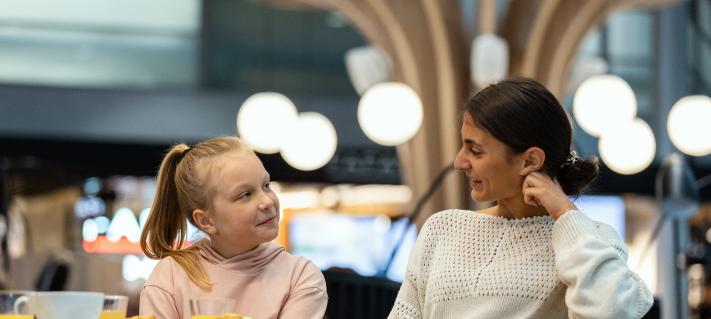The architecture of the renewed Helsinki Airport terminal serves the extensive and diverse customer base of the airport. The aim is to provide all visitors with easy-to-find services.
– The airport serves both people who travel weekly and people who travel a couple of times in their lives. They all need to find their way around and enjoy themselves. We wanted every passenger to know where they are at all times and where they should go next, says Pekka Leskelä from HKP Architects. He is the chief designer responsible for the alteration areas of the old part of the terminal.
More spacious and clearer routes
The terminal renewal was planned in cooperation with the architects offices HKP and ALA. ALA designed the extension of the terminal, i.e. the new entrance and the departure and arrivals halls. HKP Architects’ area of responsibility included changes to the existing airport facilities, such as the conversion of former check-in areas into public and commercial premises, the new P1/P2 parking garage, the new train station access in the extension and temporary arrangements for passenger routes.
In the terminal renewal, Finavia invested in a good customer experience, such as intuitive navigation and easy and unimpeded accessibility solutions. The architects took this into account, for example, by making the routes clearer and more spacious. At the same time, they wanted to respect the old solutions.
– We did not want to destroy the old building, but to clarify it and rearrange passenger flows. However, as the terminal expanded, its operations changed a lot, so we were able to leave our own handprint in the alteration areas, says Leskelä.
The airport will also be memorable for the transfer passengers
The architects wanted to give the airport a memorable visual appearance.
– Helsinki Airport is Finland's business card especially for international transfer passengers who do not have time to leave the airport during the transfer – the place for which the country is remembered. For domestic passengers, it is a home base to be proud of and to return to. Therefore, it is important that in addition to smooth travel, passengers will also have a strong architectural vision in their minds, says Leskelä.
Image: An illustration of the alteration areas. HKP Architects.
Finnishness is visible in the alteration and orientation areas as the undertone: colours, materials and clarity. The designers wanted to respect the traditions of Finnish and Nordic architecture.
– Finnishness does not involve being too pushy. That is why we highlighted Finnishness by discreet, simple and abstract means. Finnish nature and weather conditions are showcased, for example, in the ice block benches of the gate area and the glittering snow printing patterns of the commercial premises, says project architect Ami Oja.
Sustainable architecture
Helsinki Airport was opened 70 years ago in 1952. In the early years, passengers were served in a temporary barrack. The first actual passenger terminal was opened in 1969. Since then, it has been expanded several times in the 1980s, 1990s and 2000s. The airport's architecture has always been timeless and of a high standard.
– Durable materials are extremely important in spaces which are constantly used. Old solutions must be respected. We didn't want to redesign something that has already been done well, says Oja.
The materials are low-emission materials and their suppliers are domestic, when possible. The domestic content of the entire Helsinki Airport Development Programme is more than 90%.
– Finavia has long-standing experience in sustainable and responsible solutions, and these are also encouraged in the design work. We immediately found a common ground in this, Leskelä enthuses.
Main image: An illustration of the alteration areas. HKP arkkitehtitoimisto.




